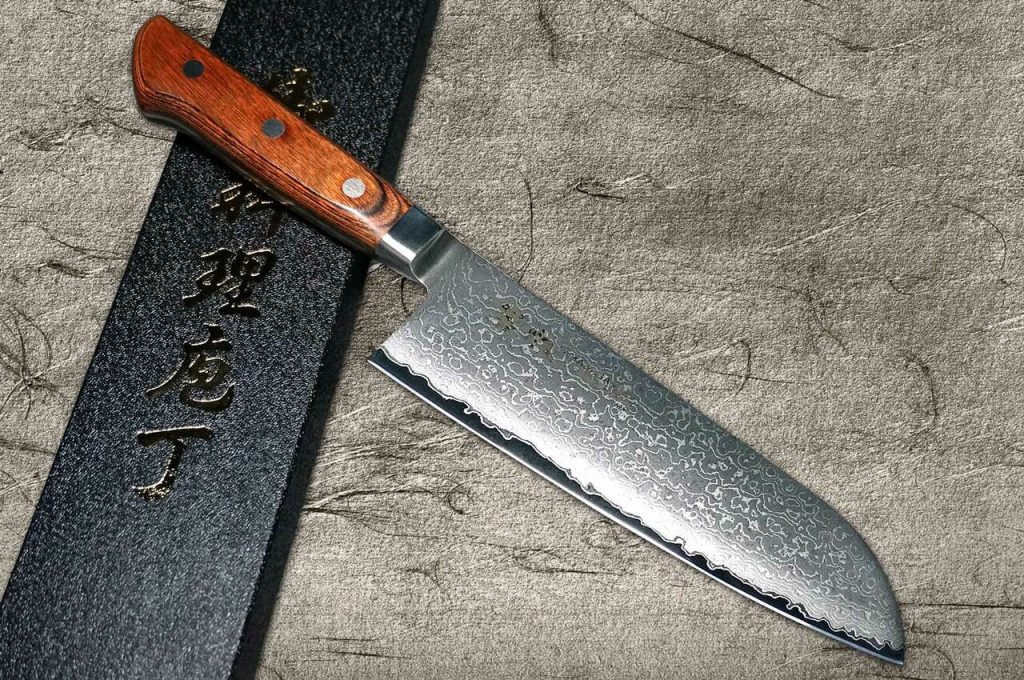
Unveiling the Excellence of the Tamahagane Santoku Knife
img by : https://www.hocho-knife.com/
In the world of culinary arts, precision and quality of tools play a pivotal role. Among these, Japanese kitchen knives hold a revered place, renowned for their exceptional craftsmanship and performance. The Tamahagane Santoku knife stands out as a prime example of this illustrious tradition, embodying the finesse and spirit of Japanese culinary expertise.
History and Cultural Significance
The Tamahagane Santoku knife has its roots deeply embedded in Japanese history. The term ‘Tamahagane’ refers to a traditional type of steel made using a unique smelting process, which dates back centuries. This steel is known for its superior strength and flexibility. The Santoku knife, meaning ‘three virtues’, is designed for slicing, dicing, and mincing, and has become a staple in both professional and home kitchens. Its cultural significance extends beyond its utility, symbolizing the blend of art and functionality in Japanese craftsmanship.
Craftsmanship and Material
Tamahagane steel is created through a labor-intensive process that involves smelting iron sand and charcoal in a clay furnace. This method produces a metal that is both hard and malleable, ideal for crafting blades. The forging of a Santoku knife from Tamahagane is an art form, requiring skill and precision. The resulting blade is not only aesthetically pleasing but also exceptionally sharp and durable.
Design and Features
The design of the Santoku knife is distinctive, featuring a shorter and wider blade than traditional Western chef’s knives. This design offers versatility and ease of handling. The blade’s sharpness ensures precise cuts, while its balance and ergonomics provide comfort during use. The durability of Tamahagane steel also means that these knives can retain their edge for a longer period, making them a reliable tool in the kitchen.
Versatility in Use
The Santoku knife is celebrated for its versatility. Its design allows for efficient chopping of vegetables, slicing of fish, and mincing of herbs. Its adaptability makes it not only a favorite for preparing traditional Japanese dishes but also an excellent choice for a variety of international cuisines.
Maintenance and Care
To maintain the quality of a Tamahagane Santoku knife, proper care is essential. It should be hand-washed and dried immediately to prevent rusting. Sharpening should be done with appropriate whetstones, and storage should be in a dry place, preferably in a wooden block or sheath to protect the blade.
Conclusion
The Tamahagane Santoku knife is more than just a kitchen utensil; it is a testament to the rich heritage and ongoing legacy of Japanese craftsmanship. Its combination of historical significance, exceptional material, and practical versatility make it an invaluable tool for chefs and cooking enthusiasts alike.